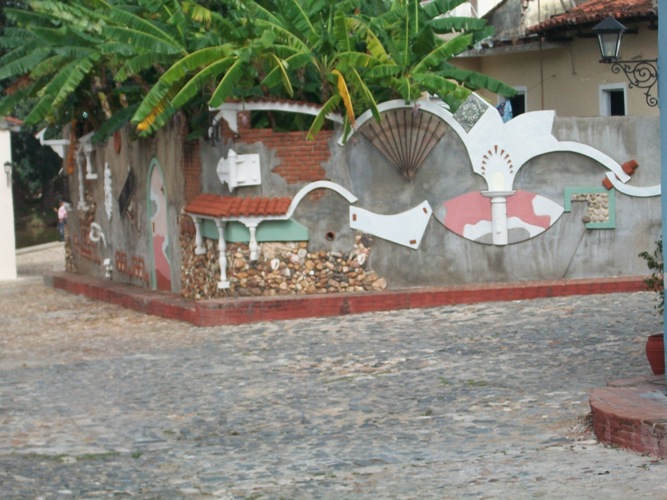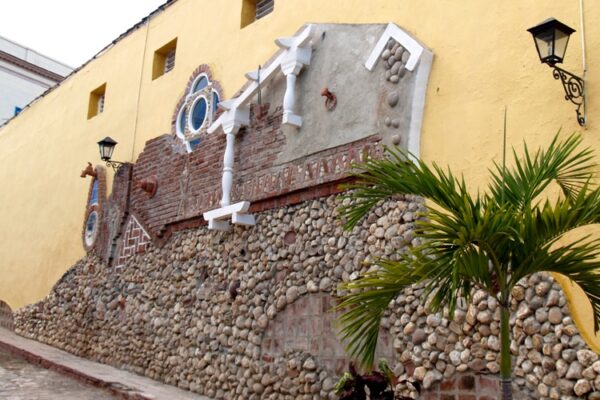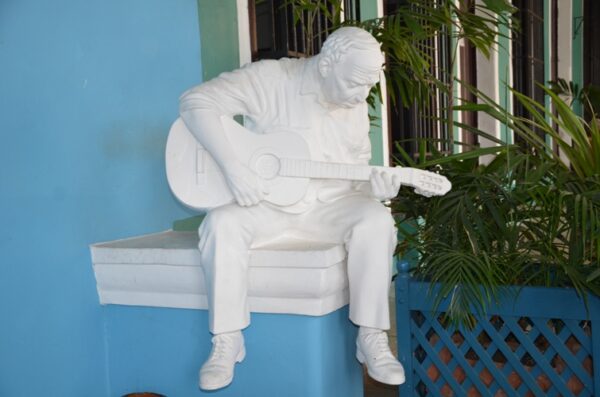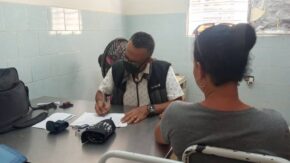City of Murals and Sculptures

In Sancti Spiritus, a town founded in 1514 and with a profuse tradition in the Plastic Arts, the tradition has been maintained, renewed with the existence of innumerable works, which confer to this territory a letter of citizenship.
An architectural center that stands out for its beauty and the conservation of buildings from previous centuries, is a suitable space for the imagination of our creators to integrate their vision of the environment to the highest demands of aesthetics with the conception of murals and sculptures.
Mud, stone, bronze and prefabricated -no matter which material is chosen- what is certain is that Sancti Spiritus can boast of exhibiting on a large scale an open-air art gallery.
This story began with actions in which a few timidly ventured on the walls of the Avenida de los Mártires and the headquarters of the Provincial Assembly of People’s Power. But what was sown then bore fruit and now the passerby identifies its most beloved corners with dedication and good taste.

Making a large-scale mural is a job for connoisseurs. The integration to the urban environment, the materials to be used, the dimensions and the message to be transmitted are indispensable, and in this case the artistic phenomenon has not manifested itself as a crude competition where each one intends to leave his mark for posterity at any cost.
The murals and sculptures in Sancti Spíritus attest to the social role of culture and its ability to transform reality and endow it with new qualities.
Félix Madrigal, Julio Neyra, Jorge López, José Perdomo and other creators have spread their artistic work throughout the city, proving that everyday life can be spiced up with good taste and practicality.
Felix Madrigal is undoubtedly one of those who has contributed the most to improve the environment of his village; to his murals in the Motel Los Laureles and the Cremeria el Kikiri are added the sculptures with popular characters that offer a touch of distinction to the Boulevard.
Some years ago this artist began (in what would be the future Boulevard of the city) a project with the purpose of perpetuating popular figures and characters of the village.

Without following a chronological order, sculptures of Teofilito were installed at the Del Rijo Inn; of Miguelito Companioni, at the Casa de la Trova, which bears his name; of Serapio, Delio Luna, Francisquito and Oscar Fernandez Morera, on the aforementioned boulevard.
This idea of sculptures linked to people and their environment is not new; other Cuban cities such as Camagüey and Bayamo also have them, as well as many other cities around the world.
In the interaction with passers-by, the sculptures of the Boulevard are already part of everyday life: strangers leave a photographic record of their visit next to them. The murals have also become symbols of the city.
As the years go by, other generations will admire these works with the same charm with which we received from our ancestors the colonial constructions and their mural paintings that they bequeathed to us.
That is the true value of a work of art: to transcend time and encourage a message for the future.


